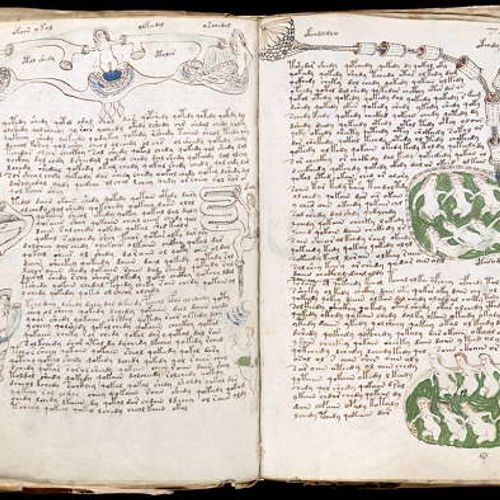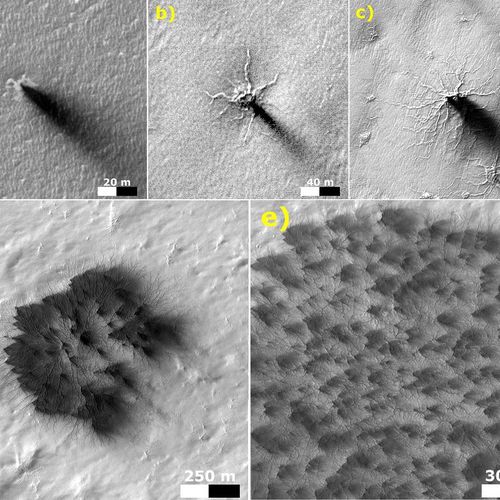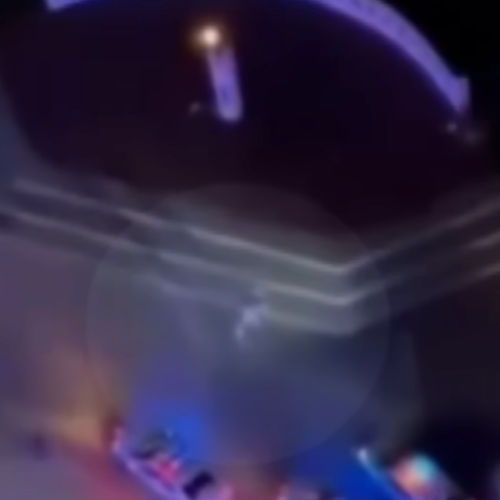
| Added | Fri, 19/02/2021 |
| Источники | |
| Дата публикации | Thu, 18/02/2021
|
| Феномены |
William R. Newbold, professor of philosophy at Penn State University, was a well-known and respected scholar. During World War I, he worked for the US government, deciphering military codes, and was considered one of the leading experts in cryptanalysis. In 1919, he took up the main cryptogram of his life, which could lead him to world fame. Newbold spent the rest of his life deciphering the mysterious document, but he failed.
The mystery to which Newbold devoted the last seven years of his life is the so-called Voynich Manuscript. The book was named after a professional dealer in old printed publications, Wilfrid M. Voynich, who discovered it in 1912 in one of the Jesuit possessions south of Rome.
Manuscript immediately attracted the attention of the Voynich. More than two hundred pages were filled with text in an unknown language, not a single word or even a symbol of which was known to the bookseller. In addition to the text, the book contained many equally mysterious drawings. Not surprisingly, Voynich bought the book from the Jesuits, along with several others.
Professor Newbold may have been one of the most suitable figures of his time to unravel the secret of the manuscript. In addition to his professional activities — cryptanalysis and the study and teaching of philosophy — Newbold, like Voynich, was an avid collector of old books (however, unlike Voynich, Newbold purchased books for personal use, not for resale). In particular, the professor's collection was decorated with the first editions of the works of Giordano Bruno, Spinoza and Descartes. In addition, Newbold was a recognized expert in the occult sciences.
In 1921, after two years of work, Newbold published his solution. Perhaps the professor's impeccable reputation, coupled with the agonizing wait for a solution, was the reason why Newbold's decipherment was accepted immediately, almost without criticism.
The approach, or more precisely, the combination of approaches, that Newbold applied, he hardly had to use before in the analysis of military ciphers. Newbold decided that the line on the last page was the key to the text. Although it has a font similar to the rest of the text, it is clearly written in a different, less accurate handwriting, thus suggesting that this is just an attempt by one of the owners of the book to write something in the "original language". Newbold had an explanation. He thought the line was written in Latin, though modified. Newbold took the beginning of the phrase — "Michiton oladabas multos te tccr cerc portas", threw out unnecessary characters from there; after reading the word "multos "with a magnifying glass, changed the" o "to" a", which gave" Michi dabas multas portas "(translated from Latin:"you gave me many doors"). "Doors", according to Newbold, is the designation of combinations of two letters in Hebrew in the teachings of Kabbalah. Based on the code phrase, Newbold created a cipher in which two-letter combinations correspond to a single letter of the Latin alphabet.
After examining the code phrase down to the smallest detail with a magnifying glass, he came to the conclusion that each letter of it consists of strokes. Letters that seem identical to the naked eye are actually made up of separate dashes and carry different meanings, being combinations of several characters at once. Newbold duplicated all the symbols in these combinations, except for the first and last. Modified so the combination was broken on the letter pairs, each of which has been replaced with a particular letter of the Latin alphabet. At the same time, Newbold handled the substitutions freely, substituting, if necessary, different letters corresponding to similar sounds — d and t, for example.
But that's not all. To get to the goal, Newbold applied the anagram method to the text obtained after all the transformations, that is, rearranging the letters in places, and received the final text in Latin. Newbold named the Opus Magnum of Roger Bacon (not to be confused with Francis Bacon, a famous Renaissance figure), a Franciscan monk and scholar who lived in the thirteenth century. According to Newbold, Roger Bacon had knowledge several centuries ahead of his time. The text described the structure of human internal organs, cells, spermatozoa, as well as the eclipse of the Sun and the structure of the Andromeda nebula.
The result was sensational, and the solution was extraordinarily complex, confusing, and strange. And most importantly, it was contradictory and contained a lot of poorly reasoned assumptions and assumptions. Newbold himself admitted that each time he deciphered the text anew, he came to a new result. The collapse of the study came in 1931, five years after Newbold's death.
British cryptologist John Manly (John Manly), who initially supported the decision of the American, published an article in which he argued that the small strokes, which seemed to Newbold to be carriers of hidden meaning, appeared due to aging and the accompanying cracking of the ink.
In addition, Manley demonstrated that the proposed decryption mechanism allows you to convert the Voynich text into almost any desired message. As an example, Manley "deciphered" one of the passages of the text as "Paris is lured into loving vestals", which can be translated as "Paris is seduced by maidens in love".
After Manley's article appeared, Newbold's decision was rejected, and he was considered a manuscript-obsessed crank. However, to date, Newbold's publication remains the only thoroughly developed transcript of the entire text with a meaningful result, and it has its adherents.
Newbold was not the first to "taste" the Voynich manuscript. After purchasing the book, the collector sent copies of it to several experts for decoding. Among them was Manley, who had served in the American intelligence service and, like Newbold, had proved himself to be a very good man during the First World War.
- the most common words consist of a single syllable;
- there are no punctuation marks;
- spaces separate syllables, not words formed from them.;
- word wrap can be performed after any syllable;
- the lengths of different syllables differ slightly from each other;
- there are only about four hundred phonetically distinct syllables;
- very similar words often have completely different meanings;
- the same word is part of different complex formations, with different meanings;
- repetition of words is common;
- words don't change shape;
- numbers look like ordinary words;
- syllables have a strict internal structure;
- syllables have three phonetic components;
- there are about 4, 25, and 30 different variations of these components, respectively.
But this is still only a hypothesis. However, the structure of the manuscript's word structure discovered by Stolfi is considered one of the major advances in manuscript research in recent times. According to Rene Zandbergen, the one who explains this structure will get the key to unraveling the manuscript.
At the same time, the search for the author of the book continues. What is surprising is that so far no books have been found related to the Voynich manuscript of similar content, or documents that could be attributed to the same author. So far, it has not been possible to significantly narrow the context for the search — as the researcher Luis Velez, a certified lawyer from Venezuela, who now lives in the United States, says, the author can be "any European who lived in the late XV — early XVI century." Any reference or similarity to another book can lead to serious progress in research.
High hopes are pinned on the high — resolution scanned copies of the manuscript pages recently published online by the Yale University Library-after all, most researchers working in their spare time have never even seen the original. According to the researcher of the manuscript from England, Nick Pelling (Nick Pelling), the main profession of the creator of computer games, this has already allowed to solve many long-standing questions. In particular, the hypothesis that the book was reset in the wrong order was confirmed. Nick, who focused his research on the iconology and iconography of the book (that is, on trying to understand the meaning of the book without deciphering the text), based on the new, higher-quality images, came to the conclusion that most likely the original version of the book was mostly one-color and additional coloring was done later by those who numbered the pages of the manuscript.
Pelling believes that now, with high-quality images, it is important to determine the correct sequence of pages and determine in what order the various elements of the book were created. There is already evidence that many of the drawings and letters were retouched several decades after the book was written, while some of the original text was distorted. According to Luis Velez, for further research, it is important to create an unambiguous, with a minimum number of errors, computer version of the text. Currently, several versions are used, created by different researchers at different times and often markedly different from each other.
The Voynich manuscript is a unique document in every respect. First of all, it's been more than ninety years after its discovery, a reasonable interpretation of the content of the book, with all the advances in modern cryptanalysis and intellectual power of the scientists who participated in deciphering the manuscript is still there. There is no answer to any of the important questions about the origin of the book — who, where and when wrote it. But despite the complexity and scale of the task, everyone can try to contribute to its solution — just access to the Internet. The Voynich Manuscript is a chance to feel like a Champollion from the comfort of your home. And the fact that the key to the solution has not yet been found does not mean that the task is impossible. This only means that the most interesting things are yet to come.
About the Voynich Manuscript
The Voynich manuscript is a book that measures 6 inches by 9 inches (15.27 by 22.86 cm) and is approximately one inch (2.54 cm) thick. The pages and cover of the book are made of parchment. There are no inscriptions or drawings on the cover itself. The text is written in an unknown alphabet. On almost every page there are drawings of unknown plants, naked women, constellations, intertwining pipes and vessels through which liquid flows. Neither the drawings nor the alphabet of the text of the manuscript are found in any other book (unless, of course, it is a modern copy or imitation of the Voynich manuscript). Most of the drawings are colored.
The text is difficult to decipher so far. There are symbols in the book that are not created in the writing system of the main text, but their meaning is not clear. The only legible inscriptions made in Latin are the designations of the Zodiac signs in the drawings and the signature of Jacobus Horcicky, one of the owners of the book.
The book consists of 204 pages, but the manuscript that Voynich bought was incomplete — part of it was lost. In addition, some pages disappeared later-probably at the time when Voynich died. Presumably, at the moment there are 28 pages missing in the book, Some of the pages have a format different from the standard one, such pages are folded along a horizontal or vertical fold line.
Some pages are numbered, most likely, not by the author, but by one of the later owners of the book. Almost every page has drawings, many of them signed. In accordance with the themes of these drawings, the book is usually divided into several parts:
- "botanical", with drawings of plants, mostly unknown to science (this part is almost half of the book);
- "astronomical", illustrated with images of the Sun, moon, stars, and Zodiac signs;
- "biological", which contains drawings of naked women inside strange systems of vessels filled with liquid;
- "cosmological", with circular drawings of unknown content;
- the "pharmaceutical" part, with painted containers, near which are drawings of various plants and a short text, presumably recipes.
The manuscript was found along with a cover letter written in 1665 or 1666. The letter was signed by the Rector of the University of Prague, Johannes Marcus Marci, and addressed to his friend and teacher, Athanasius.) Athanasius Kircher, a well-known medieval scholar who lived in Rome at the time. Marzi wrote that a close friend had given him an unusual book written in an unknown language. He asked Kircher to decipher this book, because, in his opinion, Kircher is the only one who can do it. Marzi also wrote that the book belonged to the Habsburg king Rudolf II, who believed that it was written by Roger Bacon.
About Kohau rongorongo
It is not often that a discoverer does everything possible to prevent his discovery from becoming public. However, the wooden tablets found on Easter Island were not so lucky. The missionary Eugene Eyraud was not only not happy when he discovered writing on the Easter Island entrusted to him in 1864, but destroyed all the tables known to him. And very diligently — when, four years later, the bishop of Tahiti, Tepano Jaussen, became interested in the Easter Island tablets, he managed to find only five of them.
However, it is possible that the efforts of Eugene Ayrault were in vain — by the time the tables were discovered, there were almost no people left on the island who could read them. Ayrault himself believed that the islanders had forgotten writing and kept the tablets out of habit (most likely, only the priests, who were almost completely destroyed or taken to Peru by that time, could read and write in Rongorongo). With great difficulty, Jossan managed to find a local resident who claimed that he could translate ancient texts. The bishop carefully wrote down everything that the native Metoro dictated to him, but was disappointed with the results — the same sign Metoro could translate in different ways, and the translation as a whole was difficult to call meaningful. The value of Metoro as a translator is doubtful, but he undoubtedly saved later researchers from having to guess what this or that sign represents (without knowing its true meaning).
For lack of a better one, the "Jossan list" is still used as a base for almost any attempt to decipher kohau rongorongo. In the late 19th and early 20th centuries, several more attempts were made to read the texts with the help of the islanders, but the results were even more discouraging.
In the 1940s, a group of Soviet schoolchildren became interested in the tablets, who managed to make an unexpected discovery: it turns out that some of the tablets contained parallel texts. In the late 1950s, perhaps the most important research work in the history of kohau rongorongo was published-an article by the German scientist Thomas Barthel, but he also limited himself, by and large, to compiling a "periodic table" of graphemes, accompanying each one with a possible pronunciation and interpretation. He also suggested that one of the tables shows a lunar calendar.
Rongorongo has been studied for almost 150 years, but so far scientists have not even come to a consensus about the writing system. Some believe that this is a hieroglyphic system, others see Rongorongo as a mnemonic system of signs, and others tend to think that the ancient writing of the Rapanui people consists of pictographs.
About Voynich
The origin and authorship of the Voynich manuscript are unknown. The first mention of the manuscript refers to its appearance in Prague during the reign of King Rudolf II. A cover letter found with the book claims that Rudolf II was one of the owners of the manuscript, but there is no proof of this. Wilfried Voynich believed that the manuscript was sold to Rudolph by alchemists John Dee or Edward Kelly, although the fact of their possession of the book is not confirmed.
The first precisely established by the owner of the book was Jacob Horcicka. He served as a chemist, physician, and alchemist at the court of Rudolf II, and his signature can be seen on the first page. How the book got to him is not yet clear. Another well-established owner of the book is the "close friend" mentioned in Marzi's letter. Originally it was considered Dionysius of Miseroni, jeweler of the Milanese dynasty, which was really good friends with Marci. However, later, after studying Kircher's correspondence, Rene Zandbergen established that he was Georg Baresch, a Czech alchemist. After Baresh's death, the book fell into Marzi's hands. Although it is clear from Marzi's letter that he is sending Kircher a book to decipher, there is no exact evidence that the book reached Kircher, although this is obviously true.
From the time of writing the letter to Marzi Kircher until the book was found in the Jesuit possession located in Villa Mondragone, its exact location is unknown, although there is every reason to believe that the book did get to Kircher, who then handed it over to the Jesuits. In 1912, the Jesuits who owned the villa decided to restore it. It was decided to obtain funds for the restoration by selling part of the collection of about a thousand ancient manuscripts. Voynich competed for the right to acquire them with another person, whose name is unknown, and won. In total, he purchased about thirty books. At the same time, one of the terms of the deal was the non-disclosure of information about who the books were purchased from. Voynich did keep this information a secret from the public, but shared it with his wife.
Throughout the world, the name Voynich is famous primarily because of the mysterious manuscript. However, in the Soviet Union, it was known as the surname of the author of "Gadfly" - a literary work from the school curriculum. Ethel Lillian Voynich Buhl, the author of the book, was the wife of Wilfrid Voynich, and also the daughter of George Buhl, the inventor of the Boolean algebra named after him.
The origin and biography of Voynich himself are no less interesting. He was born in 1865 in Kaunas in the family of a minor official. Voynich graduated from Moscow University with a degree in chemistry and joined the Narodnaya Volya movement. After moving to Warsaw, he became one of the organizers of the escape from prison of two former members of the" Narodnaya Volya", who were sentenced to death. The escape failed, and Voynich and the other conspirators were arrested. Voynich was exiled to Irkutsk, from where he managed to escape three years later. He made it to London, where he later married Ethel Lillian, who was also involved in the left movement.
By the beginning of the XX century, the Voynichs had moved away from the revolutionary struggle. Wilfrid became a bookseller, in which capacity he gained fame.
After Voynich's death, the book was inherited by his wife, and after her death, it went to Wilfrid's secretary and Ethel Voynich's friend Ann Neill. She sold the book to the merchant Hans Kraus. He was unable to resell the manuscript and donated it to Yale University, in whose library the book is now kept.
About Rohonczi Codex
The manuscript owes its name to the Hungarian town where it was kept until 1907 (presumably the codex was written in the middle of the XVI century, but the exact date of its creation is unknown). In 1907, the then owner of the codex donated his entire library to the Hungarian Academy of Sciences, and the strange 448-page book in an unknown language first fell into the hands of scientists. Hungarian academics brought in a German researcher, Bernhard Jlg, to decipher the code, who, after failing, declared that the code was filled with nonsense.
It is still unknown in what language the manuscript was written. In addition, the" alphabet " of the codex consists of almost two hundred characters, which also does not facilitate the work of researchers.
Not at all inferior to the Voynich manuscript in "mystery", the codex is much less well-known, since it was mainly deciphered by Romanian scientists. To date, there is only one translation of the codex, made in 2001 by the philologist Viorica Enachiuc, according to which the text tells about the struggle of the Volokhs with the Pechenegs and Polovtsians).
Expert opinions on the Voynich manuscript
Gordon Rugg:
It is unlikely that this is a text in an unknown language, since linguistically it is very unusual. Previously, it was thought that the text was too complex to be a hoax. If it is code, it is much more difficult to decipher than any other code from the "pre-computer" era, and its properties are too difficult to relate to any known coding system.
Jacques Guy:
I am convinced that the manuscript is written in a natural language (most likely already defunct), and that the" Chinese hypothesis " of Georges Stolfi is correct (it is not necessarily Chinese, but the linguistic characteristics of the language of the manuscript are close to Chinese). I believe that it is the least improbable (just so, not the most likely) that the manuscript was written by some Italian traveler who learned a little-known (possibly extinct) the Chinese dialect and decided to write his secret diary in it, which ensured that no one else could read it. The Voynich manuscript is a reflection of our utter ignorance of what language is, and what makes it so, what distinguishes language from abracadabra. We cannot explain it, we cannot understand it, simply because we lack the necessary knowledge.
Nick Pelling:
Although I am cautious in my opinion, I am somewhat certain that the manuscript is a "book of secrets" compiled in the Milan area in the mid-15th century, and that the coder Cicco Simonetta was involved in its encryption between 1476 and 1480.
Luis Velez:
I don't think the manuscript is a modern or medieval hoax. This, however, does not mean that the text necessarily carries a meaning. The manuscript may have been copied by an illiterate scribe from a lost original whose meaning he did not understand. Or it may turn out to be glossolalia (the usual meaningless writing), despite the fact that the levels of entropy — a measure of the randomness of any block of information-noted by some researchers indicate that this document has a certain language structure. It can be a unique sample of an unknown artificial language, or even a natural language that has disappeared. These can be numbers. These can be prayers, names of angels. Or perhaps a pharmaceutical reference book. Or, as some suggest, information in a known language, but very cleverly encrypted. These are just some of the possible explanations for our non-poso.
Gerard Cheshire (British linguist) He claims that the text was written in a dead language and is dedicated to women's diseases. The scholar believes that the manuscript is written in the Proto-Roman language. This language was formed on the basis of "vulgar Latin" and is the ancestor of all the languages of the Mediterranean known to us: Portuguese, Italian, French, Spanish.
There are also more exotic versions that this manuscript was created by a lone alien who accidentally came to Earth, or it may be the notes of a time traveler or a wanderer in different dimensions.
Новости со схожими феноменами
Log in or register to post comments









